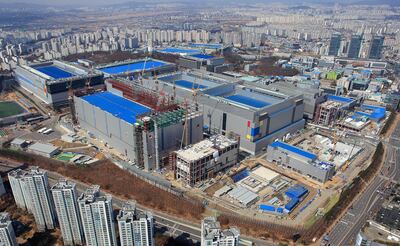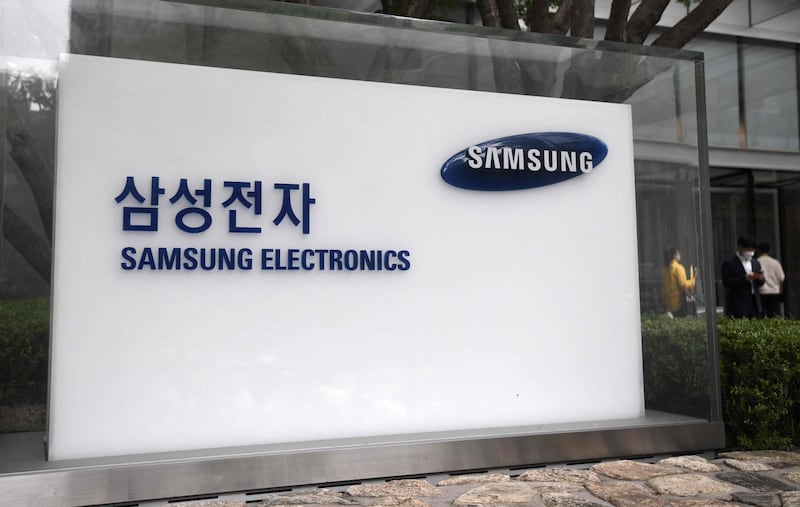Samsung Electronics said its third-quarter operating profit is expected to increase almost 28 per cent from a year ago, its highest in three years, driven by the sale of its new foldable smartphones and surging memory chip prices and demand.
The world's biggest smartphone and memory chip maker reported an operating income of 15.8 trillion Korean won ($13.3 billion) in the three months to September 30, according to the company's preliminary results.
It is lower than the Refinitiv SmartEstimate of 16.1tn won but the highest quarterly profit since the third quarter of 2018 when Samsung posted a profit of more than 17.5tn won.
The company’s sales during the July-September period jumped more than 9 per cent on an annualised basis to 73tn won.
Samsung, South Korea's largest company, did not reveal its net income or details on the performance of its different divisions in its preliminary results.
Industry analysts said Samsung partially benefitted from the pent-up demand for semiconductors or memory chips in the third quarter. They accounted for nearly half of the company's operating profit in the first half of the year.
“Both revenue and operating profit [are] lower than our estimate, and market estimate,” SK Kim, executive director and senior analyst at Daiwa Capital Markets, told CNBC.

Samsung’s smartphone business was moderately affected by the global supply chain disruptions but increasing semiconductor prices are expected to boost the company’s components business, he added.
Surging semiconductor prices and sales can raise the company's chip division's operating profit in the third quarter by nearly 80 per cent yearly, according to analysts’ estimates
The company’s stock closed down 0.14 per cent to 71,500 won on Friday after surging as high as 72,400 won earlier in the day. The company is expected to announce its detailed earnings on October 28.
Samsung's chip contract manufacturing business, also known as foundry business, is expecting a huge boost in the coming months.
The company aims to start producing 3-nanometre chip designs in the first half of 2022 as it wrestles with Taiwan Semiconductor Manufacturing Company to enhance its market share. The new design will allow up to 35 per cent decrease in area, 30 per cent higher performance or 50 per cent lower power consumption compared to the 5nm designs, the company said.
“We will increase our overall production capacity and lead the most advanced technologies,” Samsung’s president and head of foundry business Siyoung Choi said at the company’s fifth annual Samsung Foundry Forum on Thursday.
“Amid further digitalisation prompted by the Covid-19 pandemic, our customers and partners will discover the limitless potential … delivering the right technology at the right time,” he added.
The company said its 2nm design is in the early stages of development with mass production expected in 2025.
Samsung, which unveiled two 5G-enabled foldable smartphones under its premium Galaxy series in August, is also pinning high hopes on its foldable technology.
Foldable smartphone shipments are expected to surge nearly three times on an annual basis to about 9 million units this year, with Samsung holding 88 per cent of the market share of the high-end devices, according to Hong Kong-based Counterpoint Research.

Overall smartphone shipments are forecast to reach 1.38 billion units this year, up 7.7 per cent over 2020, the International Data Corporation reported.
With a yearly increase of 9.3 per cent in smartphone shipments, Samsung maintained its top position with 18.8 per cent market share in the second quarter, selling 59 million smartphones in three months, found IDC.
Chinese brand Xiaomi, which sold 53.1 million smartphones, occupied the second position with 16.9 per cent share of the global smartphone industry.







